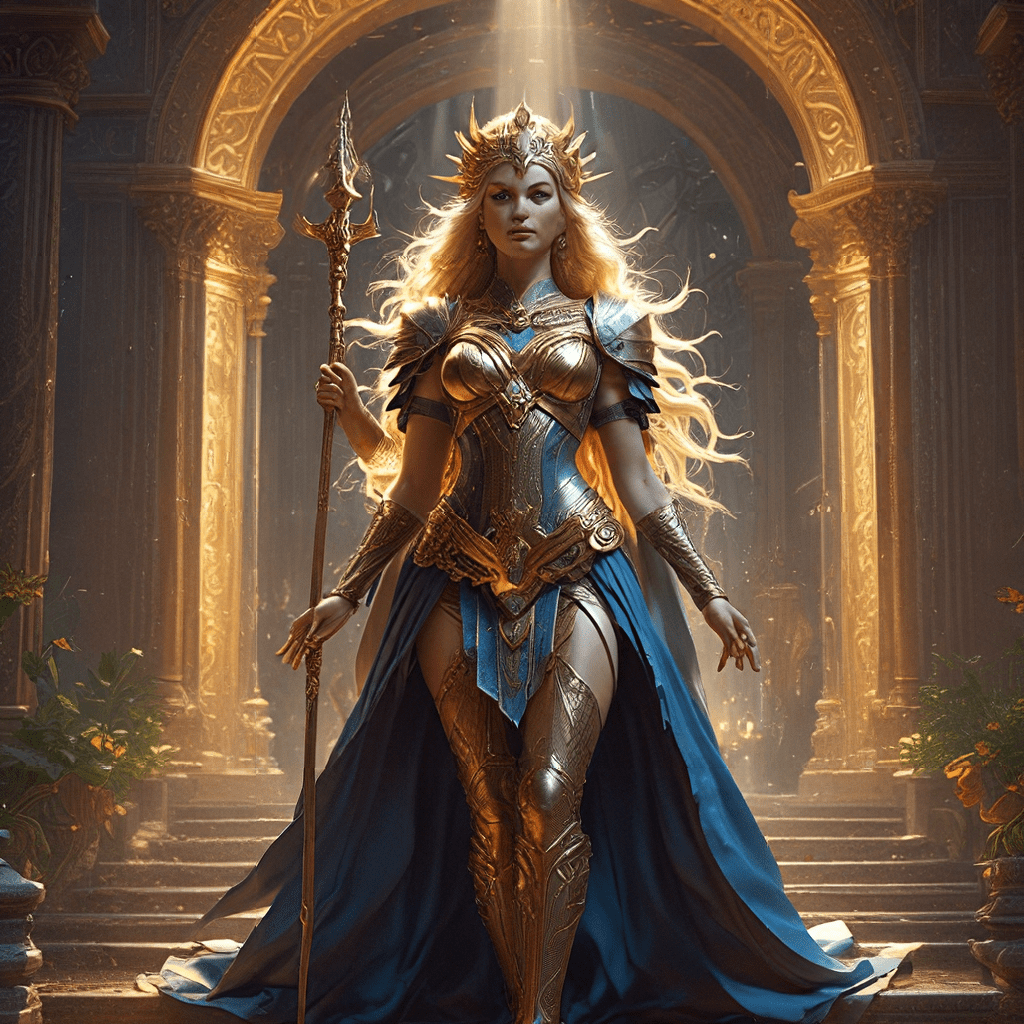The Ennead: The Nine Great Gods
In ancient Egyptian mythology, the Ennead was a group of nine deities who were considered the most important gods of the universe. They represented the essential elements of creation, existence, and the order of the cosmos. The Ennead were often depicted together in artwork and were believed to rule over the heavens, the earth, and the underworld. These nine gods played vital roles in the creation of the world and the lives of humans.
Ra: The Sun God and Creator
Ra, often depicted as a falcon-headed man, was the sun god and a central figure in ancient Egyptian religion. He was believed to be the creator of the universe, having emerged from the primordial waters of Nun. Ra traveled across the sky in his solar barque, bringing light and life to the world. Each day, he battled the forces of darkness and chaos, ensuring the continued existence of order. Ra was associated with power, royalty, and the divine right of kings. His worship was widespread throughout Egypt, and he was considered the patron of the Pharaohs.
Osiris: God of the Underworld and Rebirth
Osiris, often depicted as a green-skinned man with a mummified body, was the god of the underworld, agriculture, and rebirth. He was known as the “King of the Dead” and ruled over the afterlife. Osiris was murdered by his brother Seth, but was resurrected by his wife Isis. His story represents the cycle of death and rebirth, offering hope for eternal life. The Egyptians believed that all souls would be judged by Osiris in the afterlife, and those who were deemed worthy would enter the Field of Reeds, a paradise filled with abundance. Osiris was a powerful symbol of hope and renewal, representing the triumph of life over death.
Isis: Goddess of Magic, Motherhood, and Healing
Isis, often depicted as a woman with a crown and wings, was the goddess of magic, motherhood, and healing. She was known for her powerful spells and her ability to protect those who were in need. Isis was also the sister and wife of Osiris, and played a crucial role in his resurrection. She was considered a mother figure to the Egyptians and was often invoked for her healing powers. Isis was a symbol of love, compassion, and devotion, representing the restorative power of nature and the strength of female power.
Horus: God of Kingship, Protection, and the Sky
Horus, often depicted as a falcon-headed man, was the god of kingship, protection, and the sky. He was the son of Osiris and Isis, and was believed to have avenged his father’s death by defeating Seth. Horus was considered the protector of the Pharaohs, and his image was often used to represent royal power. His association with the sky gave him a strong connection to the sun god Ra, and his falcon form was a symbol of strength and vigilance.
Seth: God of Chaos, Storms, and the Desert
Seth, often depicted as a jackal or a creature with a combination of animal features, was the god of chaos, storms, and the desert. He was known for his destructive nature and his rivalry with Osiris. Seth was the embodiment of the forces that sought to disrupt order and balance in the world. He was also associated with the desert, which was seen as a place of danger and unpredictability. While often viewed as a villain, Seth also played a necessary role in maintaining the balance between order and chaos.
Nephthys: Goddess of Mourning, Magic, and the Dead
Nephthys, often depicted as a woman with a crown and wings, was the goddess of mourning, magic, and the dead. She was the sister of Isis and Seth, and played a significant role in the myths surrounding Osiris and Horus. Nephthys was known for her ability to protect the dead and guide them through the afterlife. She was also associated with magic and was believed to have the power to heal and restore life. Nephthys represented the dark and mysterious aspects of the world, but also offered comfort and guidance to those who were grieving.
Geb: God of the Earth
Geb, often depicted as a man with the head of a goose, was the god of the earth. He was the son of Nut and the brother and husband of Nut. Geb was responsible for the fertility of the land and the abundance of crops. He was also associated with the underworld, as the earth was seen as a place where the dead resided. Geb represented the stability and solidity of the world, and his image was often used to symbolize the connection between the earth and the heavens.
Nut: Goddess of the Sky
Nut, often depicted as a woman with a body that arched across the sky, was the goddess of the sky. She was the daughter of Shu and Tefnut and the wife and sister of Geb. Nut was believed to give birth to the sun, moon, and stars each day, and her image was often used to represent the vastness and beauty of the heavens. Nut was a symbol of protection and nurturing, as she embraced the earth and its inhabitants. She represented the feminine power that sustains life and allows for growth and renewal.
Thoth: God of Wisdom, Magic, and Writing
Thoth, often depicted as a man with the head of an ibis or a baboon, was the god of wisdom, magic, and writing. He was the scribe of the gods and was responsible for recording knowledge and creating the written language. Thoth was also associated with the moon and the cycle of time. He was a powerful figure in Egyptian mythology, representing the power of intellect, knowledge, and communication. Thoth was a symbol of learning and the search for understanding, and his image was often used to represent the wisdom of the ancient Egyptians.




